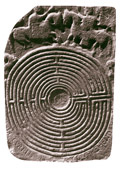The eLitMed.hu medical portal uses computer cookies for convenient operation. Detailed information can be found in the Cookie-policy.
Lege Artis Medicinae - 2002;12(09)
Content
[Drug treatment possibilities in chronic liver diseases]
[Alcoholic and drug induced liver diseases, nonalcoholic steatohepatitis, hepatitis C and B chronic hepatitis, autoimmune diseases (primary biliary cirrhosis, primary sclerosing cholangitis, autoimmune hepatitis) and metabolic disorders (hemochromatosis, Wilson's disease) are the main chronic liver diseases. Authors summarize, based on the latest literature data, the medications of chronic liver diseases, emphasizing the treatment of the everyday practice. Natural and synthetic antioxidants are approved for the treatment of chronic alcoholic liver diseases besides abstinence, with diet of adequate quality and quantity. Nucleoside analogues (lamivudin) are recommended for the first-line therapy of the treatment of chronic hepatitis B. Interferon is presently considered the optimal treatment for only certain patients. Interferon and ribavirin combined therapy is well-established in the treatment of chronic hepatitis C. Ursodeoxycholic acid is the beneficial treatment option for primary biliary cirrhosis and primary sclerosing cholangitis. Prednisolon and azathioprine constitute the basic therapy of autoimmune hepatitis. Presumably, in the future, new strategies based on immunosuppressive combinations will play a crucial role. The chelating deferoxamine has less important part in the treatment of hemochromatosis. D-penicillamine still plays principle role in the medication of Wilson's disease.]
[QT dispersion - the surface ECG marker of arrhythmic risk]
[During the past decade numerous publications have reported the pathophysiological and clinical value of QT dispersion. Increased QT dispersion was observed to be associated with proarrhythmic drug effects, prediction of mortality in heart failure and risk assessment after acute myocardial infarction. Based on the results of the repolarization process research and other significant clinical studies, the meaning and the usefulness of QT dispersion seems to be challenged. The original concept of portraying QT dispersion as a direct measure of regional heterogeneity of myocardial refractoriness is seriously flawed. At the same time, disproving this concept is not a good reason for stating that QT dispersion does not exist. The measurement of QT dispersion seems to be an approximate expression of repolarization abnormalities and should not be taken as a gold standard for a noninvasive estimate of repolarization abnormalities. However, we presently have no decent and widely available alternative to address repolarization abnormalities in standard 12-lead ECG. The authors present the pathophysiological meaning of QT dispersion, the controversies of automatic and manual methodology and the possible clinical relevances based on the most recent studies.]
[The effect of angiotensin receptor antagonists in diabetic nephropathy]
[Influencing the renin-angiotensin system through receptor blockade has become a new therapeutic approach toward the treatment of several morbidities, i.e. hypertension, cardiac failure and diabetic nephropathy. The current paper reviews the importance of diabetic nephropathy, the physiology of the renin-angiotensin system and specific effects of receptor blockade on different organs based on 3 new studies (published last year) using angiotensin-II receptor blockers. The paper gives a summary of the IRMA, IDNT and RENAAL studies, including their clinical and therapeutic significance in general practice as well as in specialized diabetes care. The new therapeutic approach (with an excellent safety profile, and infrequent side effects) could delay the progression or might even prevent the manifestation of diabetic nephropathy not only with lowering blood pressure but with its direct effects on target tissues as well. The angiotensin-II receptor blocking agents might be useful for the treatment of cardiac failure in hypertensive patients.]
[Oral clodronate for the prevention and therapy of bone metastasis of breast cancer]
[1600 mg/d oral clodronate has been shown to reduce the incidence of skeletal complications significantly in advanced breast cancer cases with lytic bone metastases. Analysis of clinical trials revealed that the adjuvant, prophylactic administration of clodronate possibly decreases the number of non-skeletal metastases and might prolong survival.]
[Reference price system as a potential method for pharmaceutical cost containment]
[Reference pricing is one of the potential cost containment methods for pharmaceuticals. Authors describe its main types and the international examples of reference pricing together with technical details of its introduction. Consequences of the system are grouped into 5 categories: pharmaceutical expenditure, other health care expenditure, medical implications, consequences on patients and their health status, and political effects. They propose that reference pricing should be introduced only gradually based upon recommendations by multiprofessional teams. The system should be evidence based which includes clinical effectiveness, safety, compliance and cost-effectiveness. ”Real” active substance based reference pricing is justifiable for broad ranges of pharmaceuticals. General introduction of therapeutic reference pricing in Hungary, however, may result in serious negative consequences.]
[”I am responsible for my health but irresponsible for my illness”]
[INTRODUCTION - The aim of our study was to examine lay beliefs about illness causation of age groups with similar health status. METHODS - In 1997, research was conducted among the adult population of Budapest (N=720), in order to examine their health status and illness explanations. Based on self-rated health, ages of the 40s and the 60s were considered as the age-thresholds of significant decline in health status. Thus, the study concentrated on the three age groups of people: under 40, between 40 and 60, over 60 years of age. The Health and Illness Scale of Stainton Rogers and Furnham was employed. For identifying the patterns of illness explanations, factor analysis (varimax method) was used. RESULTS AND CONCLUSION - 5 factors were found as the basic types of illness explanations: psychical condition, external environmental determinants, work and life style, health care, internal predetermination. Parallel to deterioration of health, dominant illness explanations are also changing: emphasis moves from work and life style to biological predetermination.]
1.
Clinical Neuroscience
Is there any difference in mortality rates of atrial fibrillation detected before or after ischemic stroke?2.
Clinical Neuroscience
Factors influencing the level of stigma in Parkinson’s disease in western Turkey3.
Clinical Neuroscience
Neuropathic pain and mood disorders in earthquake survivors with peripheral nerve injuries4.
Journal of Nursing Theory and Practice
[Correlations of Sarcopenia, Frailty, Falls and Social Isolation – A Literature Review in the Light of Swedish Statistics]5.
Clinical Neuroscience
[Comparison of pain intensity measurements among patients with low-back pain]1.
Clinical Neuroscience Proceedings
[A Magyar Stroke Társaság XVIII. Kongresszusa és a Magyar Neuroszonológiai Társaság XV. Konferenciája. Absztraktfüzet]2.
3.
Journal of Nursing Theory and Practice
[A selection of the entries submitted to the literary contest "Honorable mission: the joys and challenges of our profession" ]4.
Journal of Nursing Theory and Practice
[End of Life and Palliative Care of Newborns in the Nursing Context]5.
Journal of Nursing Theory and Practice
[Aspects of Occupational Health Nursing for Incurable Patients ]












